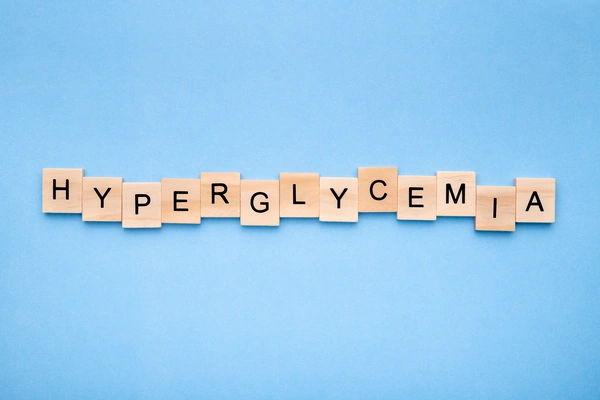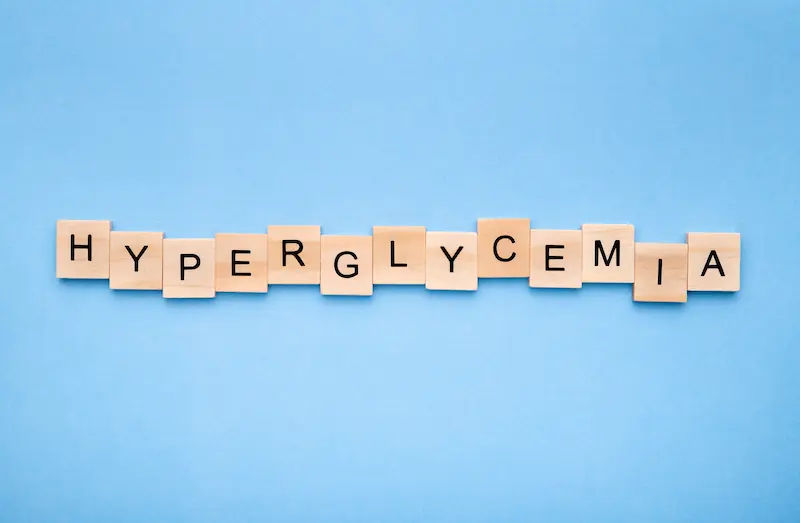Understanding the Normal Range of Blood Sugar Levels
Explore the normal range of blood sugar levels, why it matters for health, and how monitoring helps in preventing and managing diabetes effectively.

.webp?tr=q-80,f-webp,w-350,dpr-2,c-at_max 700w)
Introduction
Understanding your blood sugar normal range is one of the most powerful steps you can take for your long-term health. Glucose, a type of sugar, is the primary fuel for your body's cells, but its levels need to be kept in a careful balance. Straying too high or too low outside the ideal range can lead to immediate discomfort and serious long-term complications. This comprehensive guide will demystify what "normal" truly means, providing clear charts for fasting, post-meal, and average levels. We'll explore how these targets can shift with age, identify the warning signs of imbalance, and offer practical, evidence-based strategies to help you maintain healthy blood sugar levels naturally. Whether you're proactively managing your health or navigating a pre-diabetes diagnosis, this article will equip you with the knowledge you need.
What is Blood Sugar and Why Does it Matter?
Blood sugar, clinically known as blood glucose, is the main sugar found in your blood. It comes from the food you eat, particularly carbohydrates, and is your body's most important source of energy. Every cell in your body needs glucose to function correctly, especially your brain, which relies on it almost exclusively.
But simply having glucose in your bloodstream isn't enough; it needs to be effectively transported into your cells. This is where the hormone insulin, produced by your pancreas, comes in. Think of insulin as a key that unlocks your cells, allowing glucose to enter and be used for energy. This process is crucial for maintaining a normal blood sugar range. If this system malfunctions either because your body doesn't produce enough insulin (Type 1 diabetes) or becomes resistant to its effects (Type 2 diabetes), glucose builds up in the blood, leading to high blood sugar (hyperglycaemia). Consistently high levels can damage blood vessels and nerves over time, leading to heart disease, vision loss, and kidney disease.
Consult a Diabetologist for the best advice
Decoding the Blood Sugar Normal Range Chart
A blood sugar chart provides a quick reference to understand where your levels should be throughout the day. These values are typically measured in milligrams per decilitre (mg/dL) in the US and millimoles per litre (mmol/L) in many other countries.
Normal Blood Sugar Levels for Non-Diabetics
For individuals without diabetes, the body expertly regulates glucose within a relatively tight window.
Fasting Blood Glucose Range: This is taken after at least 8 hours of not eating or drinking (except water). A normal fasting blood sugar level is less than 100 mg/dL (5.6 mmol/L).
Postprandial (After-Meal) Blood Sugar Range: This is measured 1-2 hours after starting a meal. For non-diabetics, it's typically less than 140 mg/dL (7.8 mmol/L).
Random Blood Glucose Level: Taken at any time of the day, regardless of when you last ate, a normal random glucose level is usually under 125 mg/dL (6.9 mmol/L) in a non-diabetic person.
Understanding HbA1c: The 3-Month Average
The Haemoglobin A1c (or HbA1c) test is different. It doesn't measure a momentary snapshot but provides an average of your blood sugar levels over the past 2-3 months. It does this by measuring the percentage of haemoglobin (a protein in red blood cells) that has glucose attached to it. For a non-diabetic individual, a normal A1c level is below 5.7%. An A1c between 5.7% and 6.4% indicates prediabetes, and 6.5% or higher on two tests suggests diabetes.
How Blood Sugar Ranges Change With Age
While the core principles remain, normal ranges can have some nuances based on age and life stage.
Normal Glucose Levels for Adults: The standard charts apply to most healthy adults. However, goals may be slightly individualised based on overall health, the presence of other medical conditions, and diabetes management plans.
Blood Sugar in Children and Teens: Children's metabolisms are highly active. Normal fasting blood sugar for a child is similar to an adult's (under 100 mg/dL). However, because they are often more physically active and growing, their bodies can manage slightly wider post-meal fluctuations more effectively.
Elderly Blood Sugar Considerations: For older adults, especially those with multiple health conditions, doctors may set slightly higher A1c targets (e.g., below 8.0%) to avoid the dangerous risks of low blood sugar (hypoglycaemia), which can cause falls and cardiovascular events.
Signs Your Blood Sugar is Outside the Normal Range
Your body often sends signals when your glucose levels are imbalanced.
Symptoms of High Blood Sugar (Hyperglycaemia)
Increased thirst and a dry mouth
Frequent urination
Fatigue and lethargy
Blurred vision
Headaches
Difficulty concentrating
Symptoms of Low Blood Sugar (Hypoglycaemia)
Shakiness or trembling
Sweating and chills
Sudden nervousness or anxiety
Dizziness and lightheadedness
Hunger and nausea
Rapid heartbeat
In severe cases, confusion and slurred speech
If you experience frequent episodes of low blood sugar or persistent symptoms of high blood sugar, it's crucial to consult a healthcare professional. You can consult a doctor online with Apollo24|7 for further evaluation and to discuss your symptoms.
Key Factors That Influence Your Blood Glucose Levels
Numerous factors can cause your levels to fluctuate, including:
Diet: The type and quantity of carbohydrates (simple vs. complex) have the most immediate impact.
Physical Activity: Exercise makes your cells more sensitive to insulin and helps muscle cells use glucose without it.
Stress: Stress hormones like cortisol can cause your liver to release stored glucose.
Illness: An infection or cold can trigger a stress response, raising blood sugar.
Medications: Certain drugs, like steroids, can elevate levels.
Sleep: Poor sleep patterns can increase insulin resistance.
Hydration: Being dehydrated can concentrate the sugar in your blood.
Practical Tips to Maintain a Healthy Blood Sugar Level
Small daily habits can make a big difference in keeping your blood sugar within a healthy range.
Dietary Choices for Stable Glucose
Focus on a balanced diet rich in fibre, lean protein, and healthy fats. Fibre, found in vegetables, whole grains, and legumes, slows the absorption of sugar. Choose complex carbohydrates (oats, quinoa, sweet potatoes) over simple, refined ones (white bread, sugary drinks). This approach helps manage your postprandial glucose level effectively.
The Power of Exercise and Sleep
Aim for at least 150 minutes of moderate-intensity exercise per week, like brisk walking or cycling. This improves insulin sensitivity for hours afterward. Furthermore, prioritise 7-9 hours of quality sleep per night, as sleep deprivation is a key driver of insulin resistance.
When to Test and When to See a Doctor
If you are healthy and have no risk factors for diabetes, routine screening is typically recommended every three years after age 45. However, you should get tested more often if you are overweight, have a family history of diabetes, or have symptoms of high blood sugar.
It's time to see a doctor if your home monitoring shows consistent fasting levels above 126 mg/dL or random levels consistently above 200 mg/dL. Apollo24|7 offers convenient home collection for tests like HbA1c and fasting glucose, making it easy to get accurate results without a lab visit.
Get Your Health Assessed
Conclusion
Maintaining your blood sugar within a normal range is a cornerstone of vibrant health and disease prevention. By understanding the target numbers for fasting, after meals, and your HbA1c average, you empower yourself to make informed decisions about your lifestyle. Remember, these values are a guide, and individual needs can vary. Consistency is more important than perfection; small, sustainable changes to your diet and activity level can have a profound cumulative impact. Listen to your body's signals, don't ignore persistent symptoms, and partner with your healthcare provider for regular check-ups. Taking a proactive approach to your metabolic health today is an investment in a healthier, more energetic future.
Consult a Diabetologist for the best advice
Consult a Diabetologist for the best advice

Dr Syed Mateen Pasha
General Physician
2 Years • MBBS
Bengaluru
PRESTIGE SHANTHINIKETAN - SOCIETY CLINIC, Bengaluru

Dr. Johnson. S
General Practitioner
7 Years • MBBS MD(Preventive and social Medicine)
Pune
Apollo Clinic, Nigdi, Pune
Dr.rohit Afroz
General Physician
2 Years • MBBS.,MD (General Medicine)
Hyderabad
Apollo Sugar Clinic alkapuri colony, Hyderabad

Dr. Anand Ravi
General Physician
2 Years • MBBS
Bengaluru
PRESTIGE SHANTHINIKETAN - SOCIETY CLINIC, Bengaluru

Dr. Dhanraj K
General Physician/ Internal Medicine Specialist
25 Years • MBBS, MD Internal Medicine - Osmania Medical College, Hyderabad
Hyderabad
Apollo Hospitals Jubilee Hills, Hyderabad
(400+ Patients)
More articles from Hyperglycemia in diabetes
Frequently Asked Questions
1. What is a dangerous blood sugar level?
A reading either very high (e.g., over 250 mg/dL, especially with ketones) or very low (under 70 mg/dL with symptoms) is considered dangerous and requires immediate attention. Severely low blood sugar can lead to seizures and loss of consciousness.
2. Can you have high blood sugar and not be diabetic?
Yes, this condition is known as prediabetes, where blood sugar levels are higher than normal but not yet high enough to be diagnosed as type 2 diabetes. It's a critical warning sign to make lifestyle changes.
3. What is the normal blood sugar level for a woman?
For most practical purposes, the normal blood sugar range is the same for men and women. However, hormonal fluctuations during the menstrual cycle, pregnancy, and menopause can cause temporary changes in insulin sensitivity and glucose levels in women.
4. How can I check my blood sugar at home?
You can use a glucometer (blood glucose meter). This involves pricking your finger with a small lancet, placing a drop of blood on a test strip, and inserting it into the meter for a reading. Continuous Glucose Monitors (CGMs) are also an option for constant tracking.
5. Does coffee affect blood sugar?
For most healthy people, black coffee may slightly improve insulin sensitivity. However, caffeine can sometimes cause a short-term rise. The bigger concern is what you add to it; sugar, flavored syrups, and creamers can significantly spike your blood glucose level.


